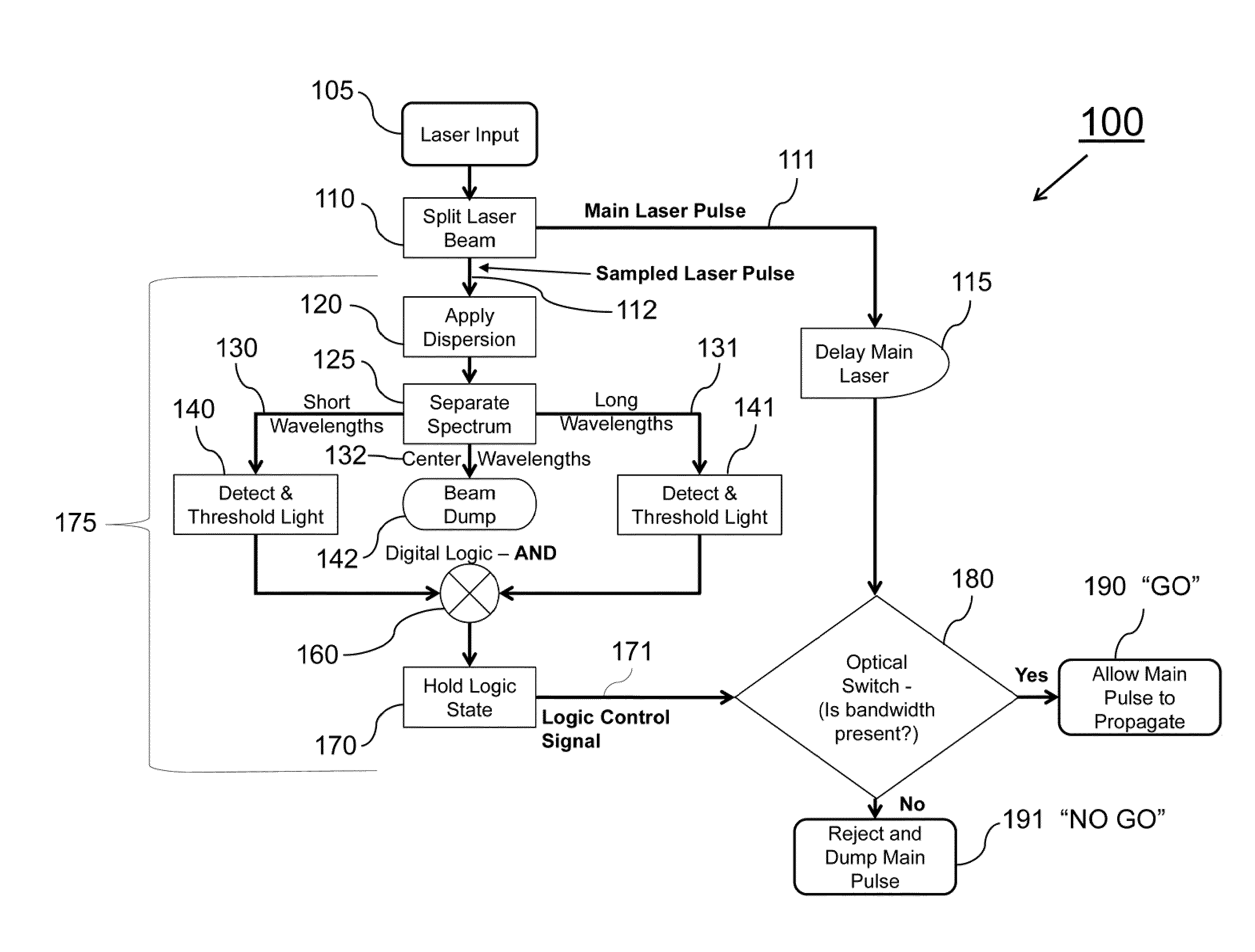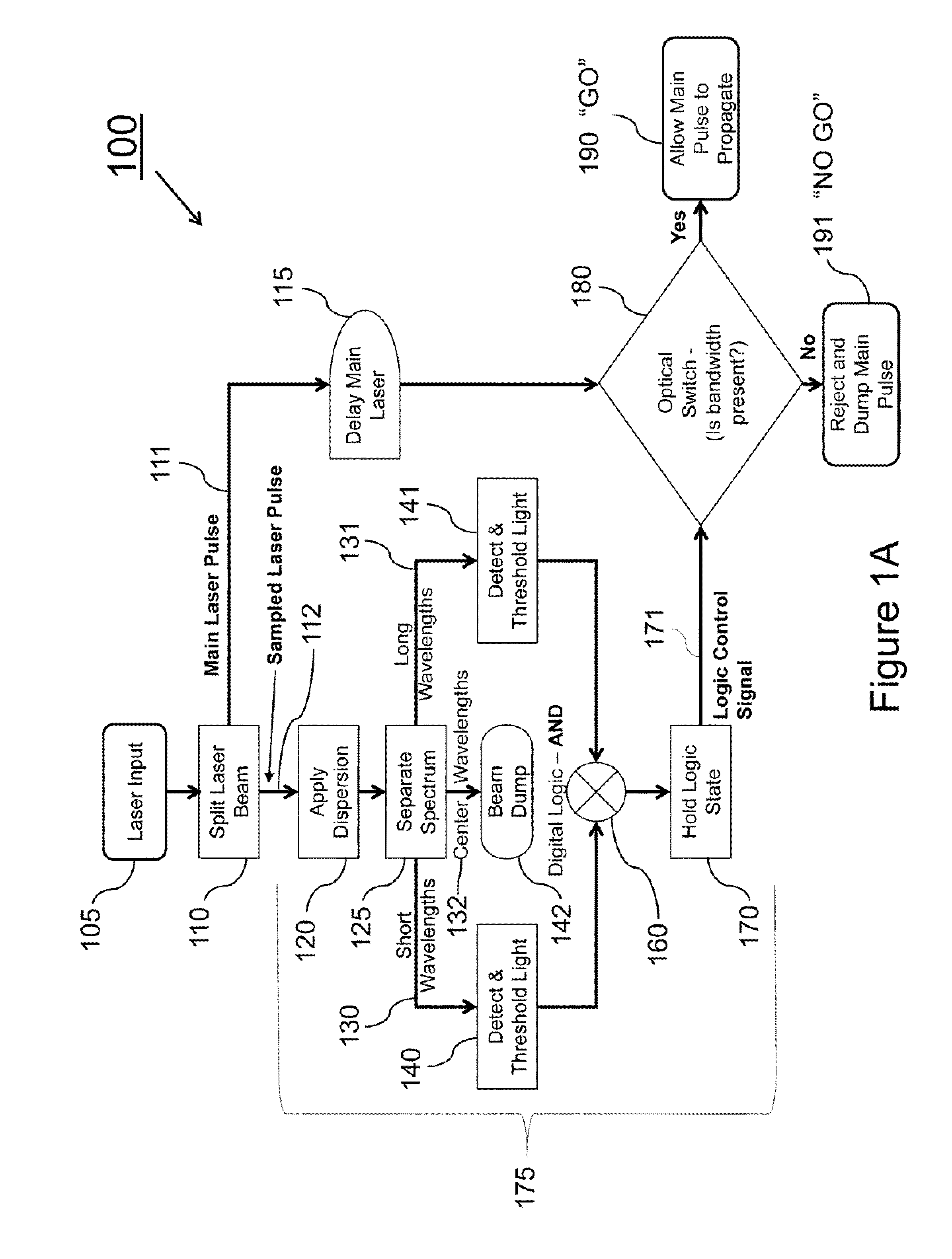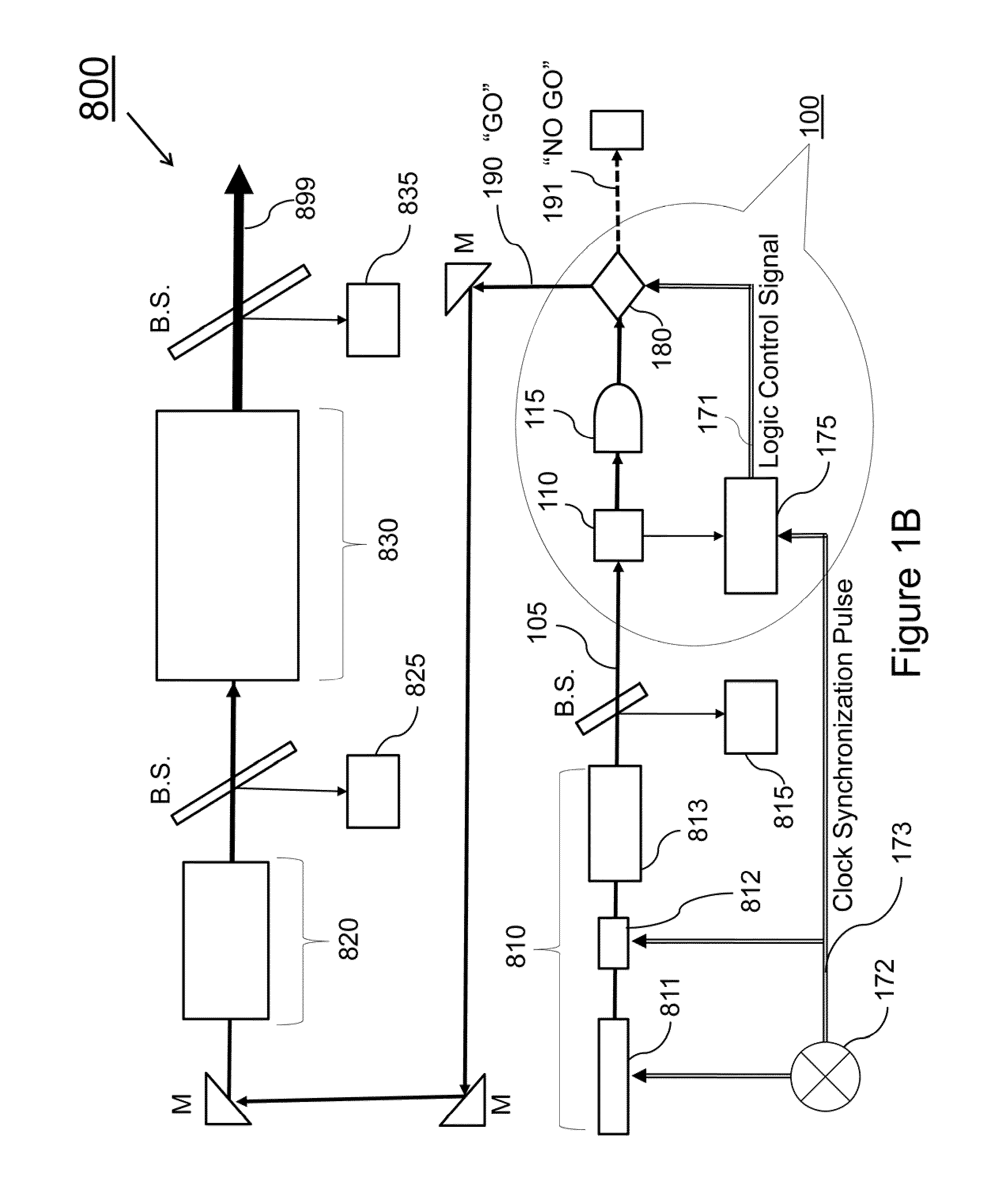Laser bandwidth interlock capable of single pulse detection and rejection
a technology of interlocking lasers and pulses, applied in the field of pulse bandwidth analysis interlocking, can solve the problems of catastrophic damage to high value systems, damage to laser architectures designed to deliver this broad bandwidth,
- Summary
- Abstract
- Description
- Claims
- Application Information
AI Technical Summary
Benefits of technology
Problems solved by technology
Method used
Image
Examples
Embodiment Construction
[0025]An exemplary embodiment of the laser bandwidth control system 100 according to the present invention is shown in FIG. 1A. An optical beam is provided from laser input 105. The beam is typically a very short-duration pulse, which may be a single pulse or one pulse in a sequence of short pulses. A typical pulse width can be in the range of approximately 10−8 seconds to less than 10−15 seconds, depending on the specific application, such as inertial laser fusion, material processing, laser communication, spread spectrum encrypted data, directed energy weapons, medical applications, etc. In these and other applications, it is critical that each laser pulse propagates within the system, as well as emerges from the apparatus, without substantial temporal degradation, which, in this case, is defined as a final pulse with less bandwidth than expected, or, equivalently, a pulse whose temporal duration is longer than expected, or, a pulse whose shape acquires undesirable temporal featur...
PUM
| Property | Measurement | Unit |
|---|---|---|
| diameter | aaaaa | aaaaa |
| time | aaaaa | aaaaa |
| delay time | aaaaa | aaaaa |
Abstract
Description
Claims
Application Information
 Login to View More
Login to View More - R&D
- Intellectual Property
- Life Sciences
- Materials
- Tech Scout
- Unparalleled Data Quality
- Higher Quality Content
- 60% Fewer Hallucinations
Browse by: Latest US Patents, China's latest patents, Technical Efficacy Thesaurus, Application Domain, Technology Topic, Popular Technical Reports.
© 2025 PatSnap. All rights reserved.Legal|Privacy policy|Modern Slavery Act Transparency Statement|Sitemap|About US| Contact US: help@patsnap.com



